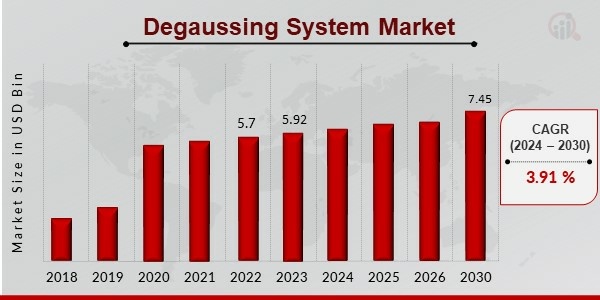The global telecom industry is poised for massive expansion, with revenues projected to reach USD 2.1 trillion in 2025, climbing to nearly USD 2.87 trillion by 2030, according to the Global Telecom Services Market Outlook 2025–2030 (Horizon). This growth is being driven by widespread 5G adoption, a surge in connected devices, and the rising influence of mobile advertising technologies.
Despite these tailwinds, operators face mounting pressure. ARPU is declining by an estimated 2% annually through 2028 (PwC), while price competition, OTT disruption, and escalating customer acquisition costs are chipping away at legacy revenue streams like voice, SMS, and basic data. At the same time, customers expect hyper-personalized and easy experiences that many traditional telco models find difficult to meet.
For telecom executives, the challenge is clear: adapt quickly or risk irrelevance. The solution lies in unlocking new, high-margin revenue streams through digitization, customer data monetization, and strategic use of advanced platforms. Technologies such as AI, IoT, and mobile video advertising are creating powerful new paths to growth.
Platforms like moLotus mobile video advertising and interaction platform, Google Ads, Meta Ads, and WhatsApp Business are enabling telcos to deliver personalized promotions, automate customer engagement, and partner with advertisers, without needing apps or costly infrastructure. moLotus enables mobile operators to automate and transform mobile video interactions, offering personalized promotions and driving high-margin ad revenues, all without the need for app downloads or costly data plans.
This article explores actionable strategies and proven technologies that telecom leaders should embrace to diversify revenue, enhance customer value, and future-proof their business in an increasingly competitive market.
Tap Into Mobile Advertising to Drive Profitable Growth
As traditional telecom revenues from voice, SMS, and even commoditized data services continue to flatten, mobile advertising has emerged as one of the most promising new revenue streams for telecom operators. According to Fortune Business Insights, global mobile ad spending is expected to exceed USD 1 trillion by 2032, underscoring the size and scale of this opportunity.
Telecom brands have a unique advantage in this space. With direct access to millions of mobile subscribers, rich customer data, and established infrastructure, telcos can deliver more targeted, personalized, and contextually relevant campaigns than most digital advertisers. The key is choosing platforms that convert these advantages into measurable business outcomes.
Platforms like moLotus are enabling telecom operators to do just that. moLotus helps telecoms to run high impact mobile video campaigns, up to 40 sec. long, delivered to the subscriber’s mobile inbox, without app downloads and mobile data plans. These mobile advertising campaigns can be customized based on demographics, location, behavior, or lifecycle stage, whether it’s welcoming a new customer, offering a plan upgrade, or running a loyalty reward program. Operators using moLotus have reported gross margins as high as 60%, due to its low-cost structure and strong engagement rates.
In parallel, WhatsApp Business is becoming a go-to channel for one-on-one interactions. Through Click-to-Message and automated flows, telcos can handle service queries, promote new offers, and upsell services. However, WhatsApp’s limited video capabilities and dependence on user opt-ins make it more suitable for conversational engagement than broad, high-reach campaigns.
TikTok, with its dominant short-form video format, is especially effective at reaching younger audiences and driving viral engagement. Some telcos have leveraged TikTok to promote handset launches, brand campaigns, or seasonal offers. Still, the platform’s dependence on constant content refreshes and higher creative costs can make sustained ad efforts more resource-intensive.
Meta Ads (Facebook and Instagram) continue to be valuable for precise targeting, retargeting, and broad reach. However, increasing competition, growing ad fatigue, and changes in user privacy policies have slightly diminished ROI for telcos, prompting them to diversify their digital ad spend.
By incorporating a mix of these platforms, telcos can unlock a sustainable, high-margin revenue channel. Leading telecom operators are already moving in this direction, repositioning themselves not just as service providers but as digital advertising enablers. This strategic pivot enhances Average Revenue Per User, improves customer engagement, and opens up recurring revenue streams, all while leveraging assets they already own: data, reach, and trust.
Use Customer Data to Create New Revenue Opportunities
Telecom operators have access to a rich source of customer information, usage behavior, locations, preferences, and spending patterns. But while this data is plentiful, it remains underused when creating new revenue. Using this data intelligently presents a major opportunity in a market where traditional telecom services are becoming less profitable.
Advertisers are increasingly looking for precise, reliable ways to reach their audiences. Telcos are in a strong position to deliver this because they collect direct, first-party data from their subscribers. When handled responsibly and in line with privacy regulations, this data can be turned into meaningful insights that help both telcos and their advertising partners.
Platforms like moLotus are enabling telcos to monetize massive telco subscriber data. With moLotus, operators can run personalized mobile video campaigns that are based on real subscriber data, such as age, location, service history, or handset type. These campaigns comply fully with data privacy rules. Because all information stays within the telecom environment, operators can deliver targeted offers while keeping subscriber trust intact.
Other platforms like Facebook Ads and Google Ads also offer targeting tools, but they depend heavily on third-party data and cookies, which are being phased out. These platforms may help with outreach but offer limited control over audience data and lower margins for telcos. WhatsApp Business supports direct communication but offers limited options for ad targeting or data-driven monetization.
In contrast, tools like moLotus give telecom operators full control of their data and messaging, allowing for direct relationships with both customers and advertisers. They can offer personalized rewards, promote service upgrades, or run seasonal campaigns, all while turning everyday customer interactions into revenue opportunities.
In short, big data is not a background asset; it’s a fuel for revenue growth. Telecom leaders who act now to build secure, data-powered advertising and engagement models will be well-positioned to increase margins, build new partnerships, and secure long-term revenue growth.
Automate and Scale Customer Engagement
In today’s competitive telecom environment, customer expectations are rising, service costs are increasing, and the pressure to improve user satisfaction has never been higher. Manual customer engagement—whether it’s onboarding, upselling, cross-selling, or service resolution—is slow, costly, and difficult to scale. To stay efficient and profitable, telecom operators are turning to automation and AI to manage customer interactions more intelligently and cost-effectively.
In 2025, telcos are moving beyond basic chatbots and reactive support models. The new focus is on AI-powered lifecycle engagement—delivering timely, personalized, and proactive communication at every stage of the customer journey. This shift isn’t just about efficiency; it’s about unlocking greater customer lifetime value.
moLotus stands out in this transformation with its innovative AI agent technology. These AI-driven virtual agents act as personalized brand representatives. Whether it’s a welcome message for a new user, a renewal reminder, or an exclusive upsell offer, moLotus AI agents use behavioral data and past interactions to communicate with precision and relevance.
This approach reduces dependency on call centres, ensures consistent message delivery, and significantly lowers campaign and support costs. Operators using moLotus report higher engagement, better customer satisfaction, and strong gains in upselling and cross-selling, all while keeping operational overheads low.
Other platforms are also contributing to telecom automation. WhatsApp Business API enables telcos to use AI-powered chatbots for customer queries, payment reminders, and support conversations. While useful, WhatsApp’s model relies on user opt-in and requires internet connectivity, making it less scalable in markets with low data penetration. It also operates on a one-to-one basis, limiting its reach compared to moLotus’s mass campaign delivery.
Meta (Facebook and Instagram) offers automation features like dynamic ad creatives, lead generation bots, and AI-driven ad placements. These tools are effective for acquiring new leads or conducting retargeting campaigns, but are primarily geared toward top-of-funnel marketing. They offer limited support for deep, personalized lifecycle communication.
Google Ads, especially through Performance Max, provides automation for lead generation across Search, YouTube, and Display networks. Features like Smart Bidding and dynamic ads optimize for acquisition. However, Google’s tools are better suited for prospecting than for managing long-term subscriber relationships.
Ultimately, telecom operators need solutions that go beyond one-time campaigns and support full lifecycle engagement—from onboarding to retention to loyalty. Platforms like moLotus deliver this capability, offering telcos a scalable, AI-powered way to automate customer interactions, reduce churn, and increase revenue per user.
In a market driven by personalization, automation, agility and speed it is no longer optional, it’s a game changer. The telcos that embrace intelligent automation now will be better positioned to lead in efficiency, loyalty, and long-term profitability.
Forge Strategic Brand Partnerships
Telecom operators hold one of the most valuable assets in the digital economy: direct access to millions of verified, mobile-first consumers. In an era where advertisers are seeking more reliable, privacy-compliant channels to reach real users at scale, this access presents a powerful opportunity. By forming strategic partnerships with brands and technology platforms, telcos can unlock high-margin revenue streams while improving customer experience and loyalty.
One example of this model in action is moLotus, designed specifically for telecom operators. moLotus enables telcos to act as direct advertising channels, running targeted, interactive video campaigns. Its win-win partnerships across Asia illustrate its potential. In Indonesia, moLotus is collaborating with Telkomsel to reach over 270 million users, aiming to generate USD 300 million in advertising revenue over three years in a market valued at USD 20 billion. Similarly, Indosat Ooredoo Hutchison is leveraging moLotus to activate its large subscriber base, delivering personalized offers that consistently generate high-margin, low-touch revenues.
These partnerships show that telcos can move beyond passive sponsorships to become full-scale digital advertising platforms, offering brands performance, scale, and verified reach. Other platforms also provide partnership models, though with different dynamics. For instance, Meta (Facebook and Instagram) offers tools like sponsored posts and programmatic ad placements. While widely used, these campaigns often rely on cookies and user data from apps, raising concerns about privacy, rising costs, and platform dependency. Google Ads, meanwhile, is expanding its partnership with telcos like Vodafone, focusing on cloud, AI, and ad monetization. Vodafone is exploring ways to use Google Ads Manager to power advertising on its TV content platforms—an example of how telcos can monetise not only their networks but also their owned media assets.
WhatsApp Business has emerged as a customer engagement tool, allowing telcos to co-host promotional campaigns and provide one-on-one support. For example, Airtel and Indosat use WhatsApp chatbots to manage thousands of customer queries daily, offering timely support, driving upselling, and improving satisfaction. However, WhatsApp’s dependence on user opt-in and data connectivity can limit campaign reach, especially in lower-connectivity regions.
Strategic partnerships offer telcos a way to maximize their network value without extensive infrastructure investment. By collaborating with platforms like moLotus and complementing those efforts with Meta, Google, and WhatsApp, telecom operators can diversify their offerings, deepen customer relationships, and establish new, scalable revenue channels.
In a market where traditional models are being challenged, becoming a digital advertising partner is not just a growth strategy—it’s a necessary evolution.
Digitally Transform Processes
As telecom markets become increasingly competitive and saturated, improving operational efficiency has emerged as a critical driver of profitability and revenue growth. Legacy systems—manual onboarding, disconnected communications, and outdated loyalty programs—are not only inefficient but also hinder customer satisfaction. To stay ahead, telecom operators must modernize how they interact with customers by streamlining processes and embracing automation.
Digital transformation is at the heart of this shift. Telecom leaders are now deploying intelligent automation to reduce costs, enhance responsiveness, and improve the customer journey. One platform helping lead this evolution is moLotus. Designed specifically for telcos, moLotus allows operators to automate essential customer communications, such as customer onboarding, billing reminders, upgrades, and thank-you messages.
Its interactive features, like Call, SMS, USSD, mgram, and Weblink, make it easy for customers to respond, dramatically reducing service costs and increasing engagement. Telcos using moLotus report up to a 30% reduction in customer acquisition and interaction costs, along with measurable improvements in ARPU and loyalty. The app-free model also eliminates friction, ensuring a seamless and efficient user experience.
Beyond moLotus, tools like HubSpot are being integrated into telecom ecosystems to enhance CRM workflows, automate follow-ups, and align sales and service teams. These solutions improve campaign efficiency, reduce manual workload, and deliver more consistent results across the customer lifecycle.
Loyalty is another area transforming. Traditional point-based or card-based programs are being replaced by dynamic, mobile-first reward systems. With moLotus, telcos can deliver personalized loyalty offers, monitor user behavior, and collect real-time customer feedback—all from a single platform. This enables operators to build deeper customer relationships while optimizing for retention and spend.
In today’s telecom environment, operational efficiency isn’t just about cost-saving—it’s directly tied to revenue and competitive edge. Telecom operators that digitize and automate customer processes are not only improving service, they’re laying the foundation for long-term growth and profitability.
Conclusion
The telecom industry stands at a defining moment. As traditional revenue sources plateau and competition intensifies, telecom operators must look beyond connectivity to sustain growth. The path forward lies in unlocking new revenue streams through mobile-first advertising, strategic use of customer data, automation, innovative brand partnerships, and operational efficiency.
Platforms like moLotus demonstrate how telcos can evolve into powerful digital advertising and engagement hubs—delivering personalized, high-margin campaigns without the need for apps or data. Similarly, integrating tools like WhatsApp Business, Meta Ads, and Google Ads empowers telcos to reach wider audiences, automate at scale, and forge new monetization models.
By modernizing customer journeys, embracing AI, and forming revenue-sharing partnerships with brands, telcos can drive higher ARPU, deepen customer loyalty, and remain agile in a fast-moving digital ecosystem. Time for telecom top level to act. Those who adopt these strategies early, investing in platforms like moLotus and embracing data-driven, automated, customer-first models, will be best positioned to lead the next wave of telecom revenue growth.






